Economics Essay: Price Elasticity and Mining in Australia Today
VerifiedAdded on 2023/03/30
|6
|620
|132
Essay
AI Summary
This essay examines the concept of price elasticity of demand within the context of the Australian mining industry, with a specific focus on BHP Billiton and the impact of China's economic slowdown. It explains price elasticity of demand as the proportionate change in demand of a good due to proportionate change in its own price, highlighting its importance in understanding revenue changes due to price fluctuations. The analysis points out that minerals generally have low price elasticity due to the lack of substitutes and the oligopolistic market structure. Furthermore, the essay discusses how China's shift from a manufacturing-based economy to a consumption-based one has led to a decline in steel production, adversely affecting the demand for Australian minerals and contracting the mining industry. A supply and demand diagram illustrates the resulting decline in market price and equilibrium quantity.
1 out of 6
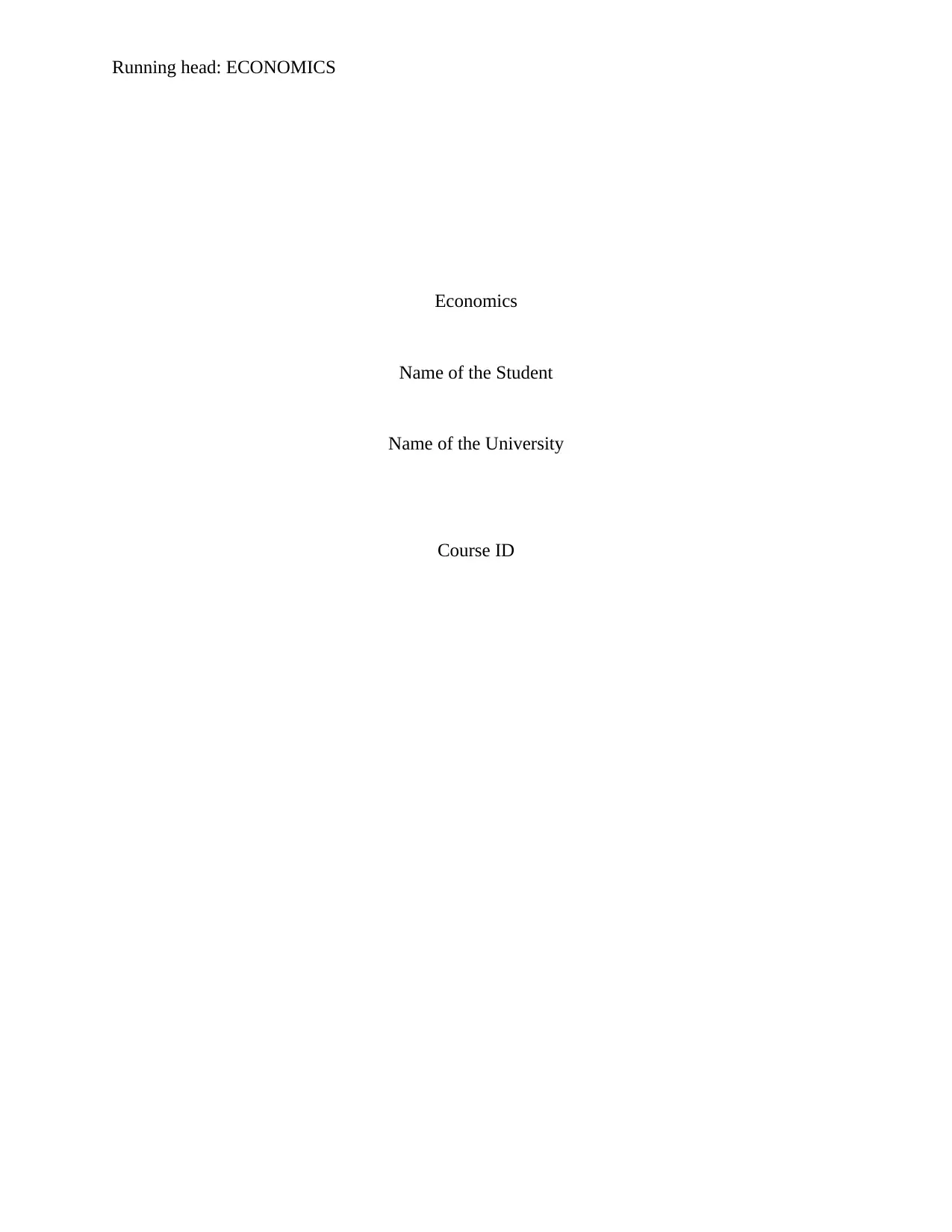
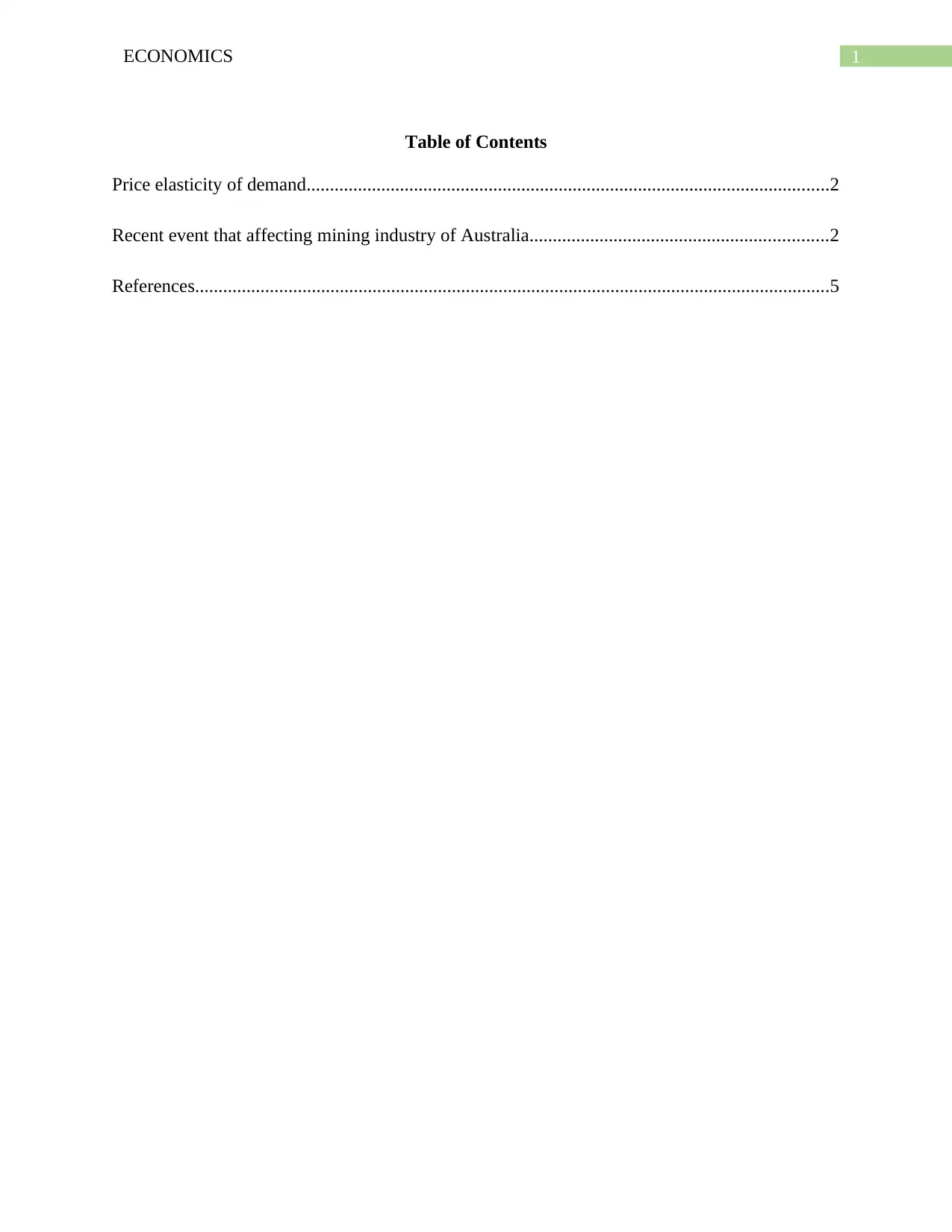
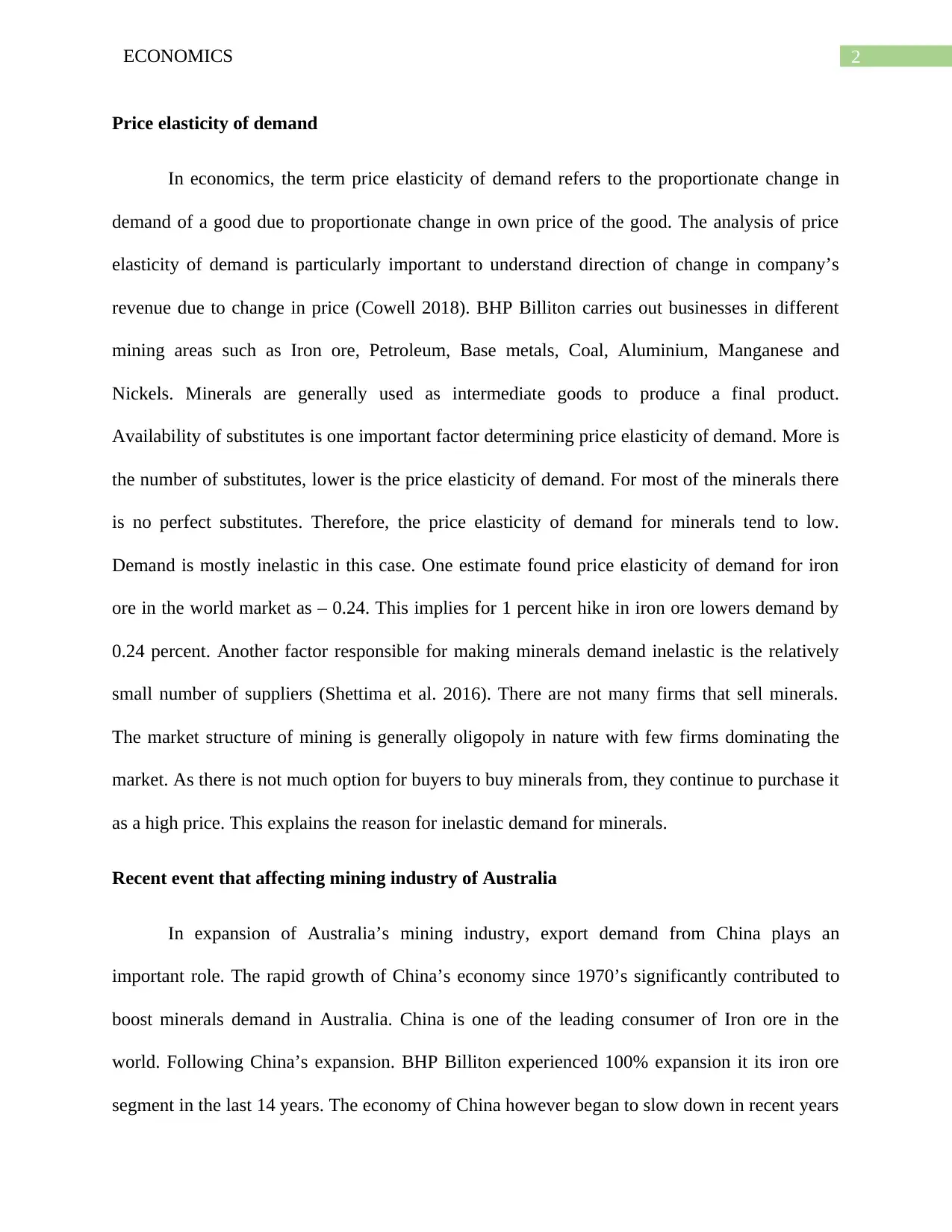

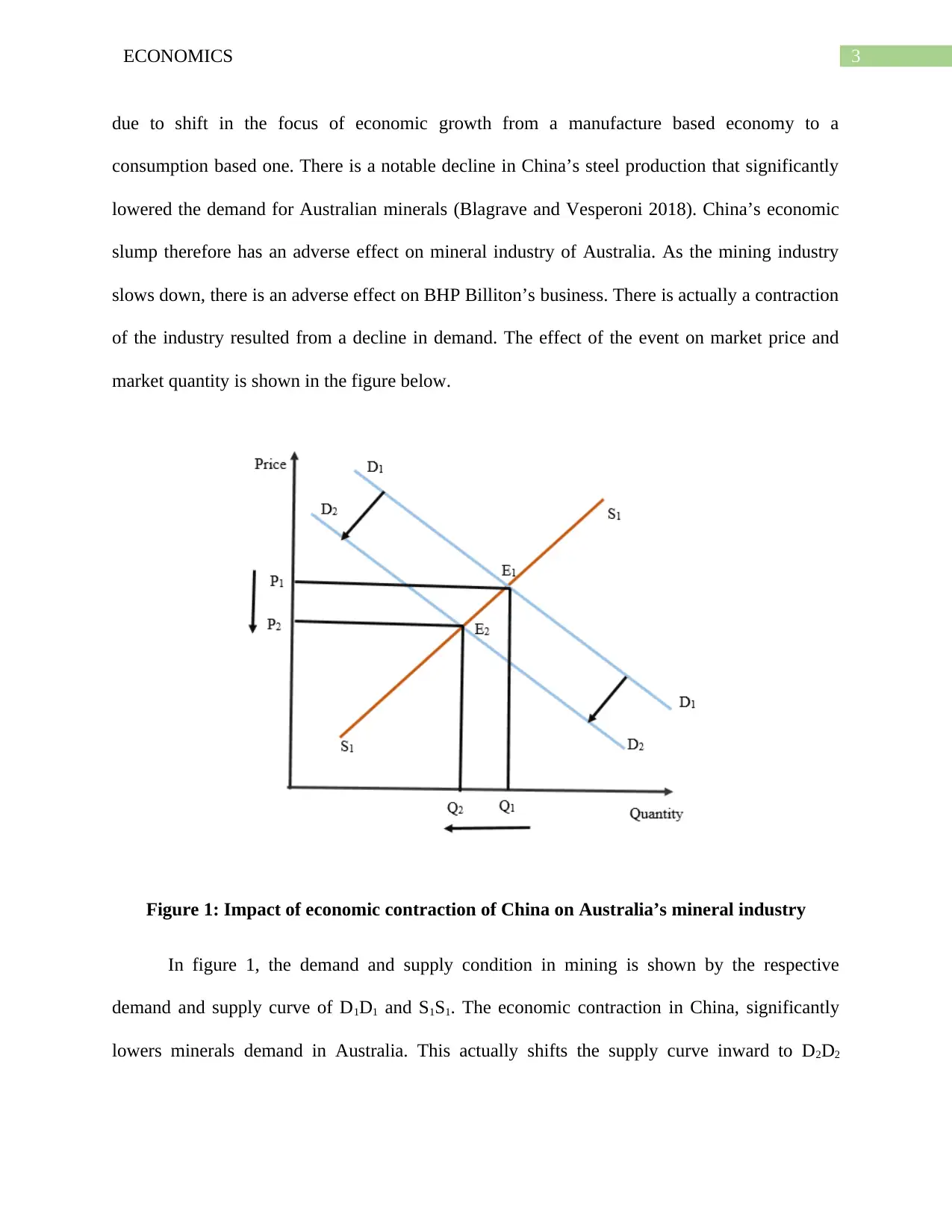

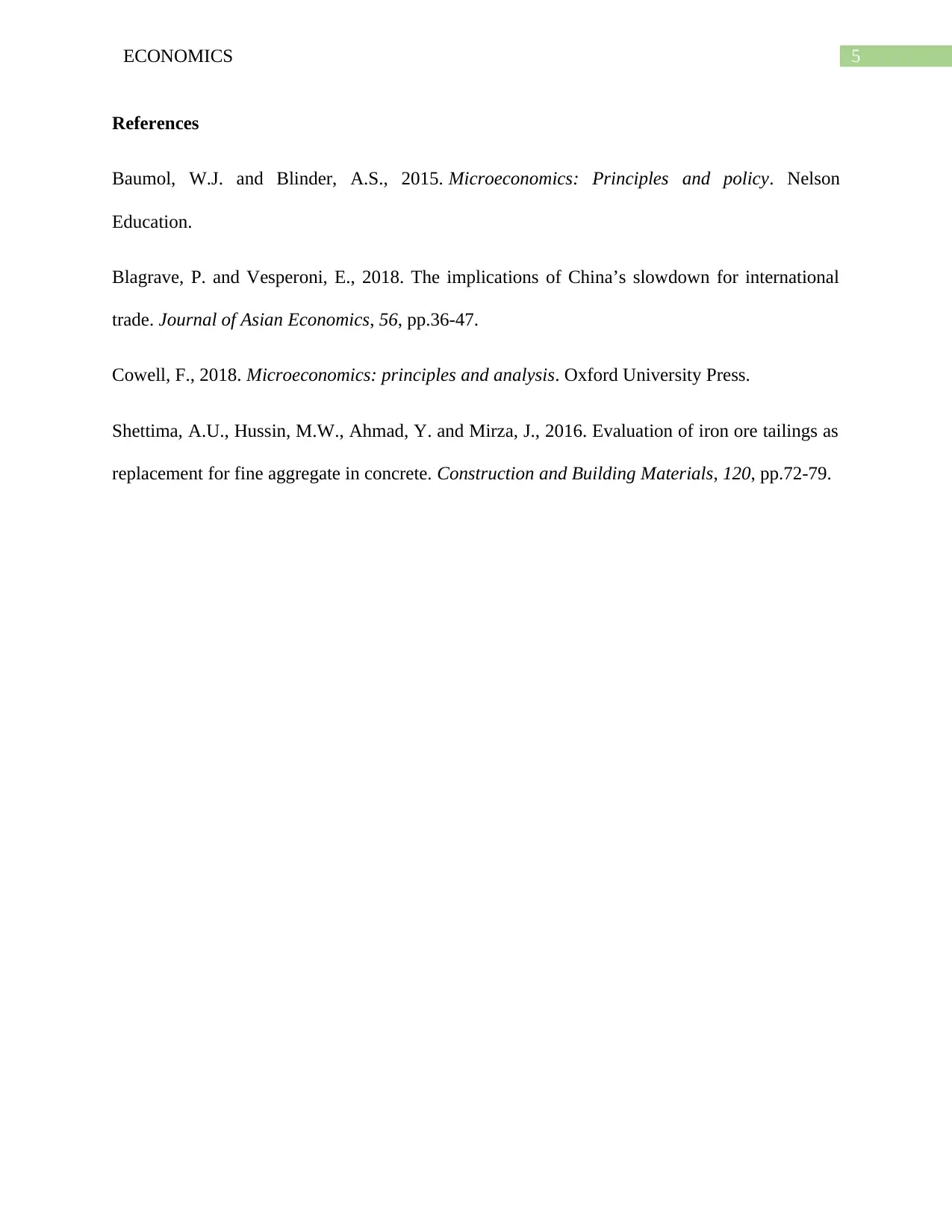






![[object Object]](/_next/static/media/star-bottom.7253800d.svg)